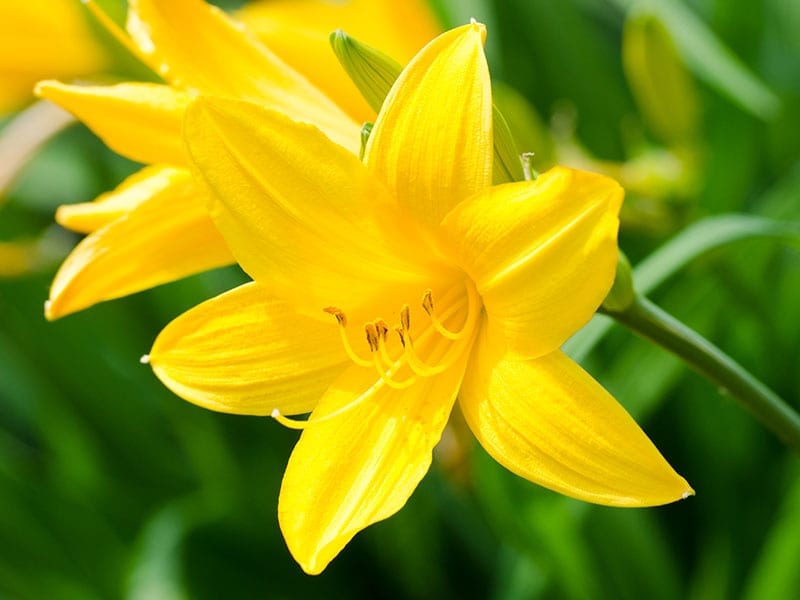The daylily is a true classic in the summer garden. From roadsides to garden beds, its bold, trumpet-shaped flowers are instantly recognizable. Although the familiar orange variety is most common, modern breeding has introduced many exciting features. Today, gardeners can enjoy daylilies with double blooms, a wide range of colors, and even repeat flowering—all on plants that are more disease resistant and easier to grow.
Because of their versatility, daylilies remain one of the most popular perennials. They thrive in sunny spots, tolerate drought, and some varieties are even fragrant. Moreover, their color range spans from pure white to nearly black, making them a perfect match for almost any garden style. In fact, whether you’re designing a cottage border or a low-maintenance landscape, there’s a daylily that will work beautifully.

Later in the summer, once flowering has finished, is the perfect time to divide older clumps. To begin, use a sharp spade to lift the plant from the ground. Then, knock off the excess soil so you can see the roots and fans clearly. Cut the clump into smaller sections using a spade or sharp knife. Next, trim the foliage by half and remove any spent stems. Replant the divisions and water thoroughly until they are established.
Thanks to their low maintenance needs, daylilies are great for both beginner and experienced gardeners. Their grass-like foliage and vibrant blooms look striking in mixed beds or as specimen plants. For added impact, pair them with perennials like daisies, salvias, or roses. Alternatively, you can grow them in large containers such as whiskey barrels or decorative urns.
All in all, the daylily is a hardworking, beautiful perennial that deserves a spot in every sunny garden.
Additional Information:
